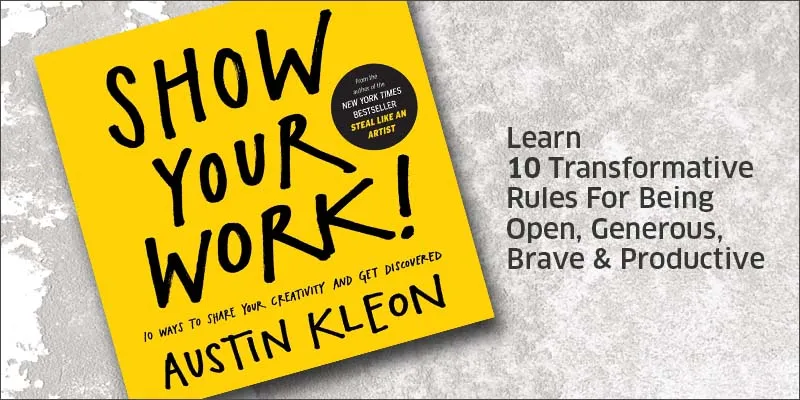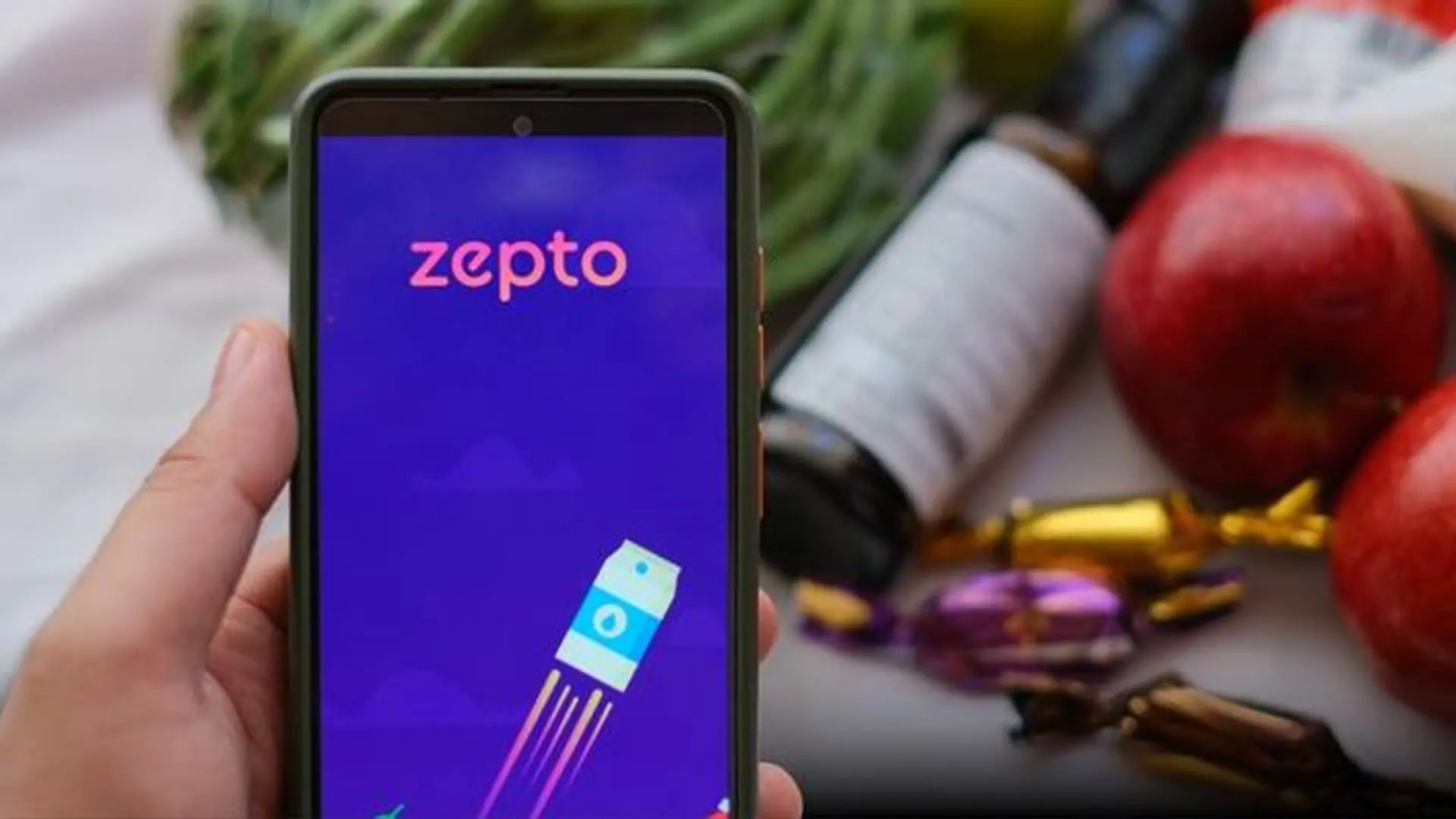If you love your work, share your story and journey – and your work will grow
If you are an entrepreneur with a great idea, a good way to get noticed is to share your creative journey with communities of interest around the world and to tell good stories. That is the message from Austin Kleon’s latest book, Show Your Work! 10 Ways to Share Your Creativity and Get Discovered.

Kleon’s earlier bestseller is Steal Like an Artist: 10 Things Nobody Told You About Being Creative (see my review). In that book, he explains that creative work builds on what came before, and thus being creative starts off with imitation and then matures into finding your own voice.
In this new book, Kleon explains how to take that critical next step on a creative journey—getting known. It is one thing to get a great idea, but another thing altogether to execute it and get the idea to spread and be adopted.
Generosity trumps genius. In an age of social media, you can share your creative sources and processes with a broad audience and get them interested in your work and maybe even collaborate with you.
Written in a humourous style, the book celebrates the community nature of creativity, or the “ecology of talent.” From the etiquette of sharing to the dangers of oversharing, the material provides inspiration and practical advice to any artist or entrepreneur in the digital age.
The compact CD-sized book makes for a quick read about the creative process, and I have summarised the 10 transformative rules below.
1. Be proud of being an amateur; you don’t have to be a genius
The world is changing so fast that it makes us all amateurs in the face of new waves of innovation. There is much more to creativity than being a lone genius – what is more important is the connections you can build and the conversations you can start around your work.
Social media allows you to ‘learn in the open,’ and shape your startup product. Raw enthusiasm is as important as intellectual power, and it is important to voice out your opinions on your work and its context. Embrace uncertainty and the unknown; don’t be afraid to learn in front of others.
Kleon even explains that he reads obituaries everyday to see how everyone started off as amateurs but went on to do great things in life; obituaries can be a source of inspiration and provide a sense of perspective to creative people.
2. Think process, not just product
Take people ‘behind the scenes,’ share your scrapbook, and show details of how you made your final product or the current version. It is important to become a ‘documentarian’ of what you do.
Keeping a diary chronicling your creative process helps you – and sharing it lets others also give useful suggestions and inputs. Drafts, sketches, demos, pinboards, prototypes and notes are important to record. Show your customers the process and the people behind the product.
3. Share something small every day
“Overnight success is a myth,” says Kleon. What works is a regular dispatch of what you are doing, shared over social media of your choice, eg. Twitter for writers, YouTube or Vimeo for film-makers, LinkedIn for the business community. Aggregated over time and with good feedback, this flow can solidify into a stock of work.
“My blog has been my sketchbook, my studio, my art gallery, my storefront and my salon,” Kleon explains from his own example. Though there is a lot of ‘free’ space on social media, you should also keep your work on your own Web site, which is not just your self-promotion machine but also your ‘self-invention machine.’
4. Open up your cabinet of ‘curiousities’ and sources of inspiration
What are some physical and online sources of your inspiration? Who are your role models? What are your favourite books, websites and movies? Who is influencing you now in your work? Share all that you enjoy, and give credit to those who have inspired you. Leave a ‘bread crumb trail’ of useful things you find online, and share the links.
5. Tell good stories
Your work does not always speak for itself – you need to learn how to tell stories about you and your work. Kleon explains a number of storytelling structures in this regard.
Don Harmon’s story circle starts off with a character in his comfort zone, who then enters an unfamiliar situation, adapts to it, and then returns to the comfort zone after undergoing change. John Gardner’s story plot starts off with a character who has an idea, pursues it despite opposition (including perhaps his own), and then arrives at a win/lose/draw situation.
In Kurt Vonnegut’s story graphs, the successful end stage is reached after a series of ups and downs, starting off with bad fortune or good fortune. Gustav Freytag’s story pyramid has a rising action, climax, falling action and resolution. Award-winning digital studio Pixar has its own story graph in all its movies.
“Everybody loves a good story, but good storytelling doesn’t come easy to everybody. Your stories will get better the more you tell them,” advises Kleon. Learn how to tell your story to everyone from a child to a senior citizen.
6. Teach what you know
If you have mastery in some domain, share some of your trade secrets (notice how many chefs have cooking shows on TV?). Share some references, techniques, skills and knowledge. When you teach others, you get them more interested in your work, and that can reveal more areas for you to learn and master.
7. Don’t turn into human spam
Talking about yourself is great, but also shut up and listen. Don’t become human spammers who talk only about themselves and show no interest in other things. Become a good contributor in your field, at that sweet spot between hoarding and spamming.
Be a two-way street, an open node, a connector. Seek out hearts, not eyeballs. Don’t be fixated only on pageviews, but on repeat traffic and conversation. Don’t just chat with people online but meet them IRL (in real life) as well; regular meetups are great for collaboration. “Meet up in meatspace,” urges Kleon.
8. Learn to take a punch
Be prepared also to take criticism when you post your views and work online. Get used to it. Learn from it. Keep your balance. Learn meditation if criticism is knocking you off balance. Don’t engage with excessively aggressive provocateurs. Build up a good ‘mental firewall.’
9. Pass around the hat
Don’t be content with the ‘struggling entrepreneur’ image, learn to raise funds and get people to pay for your work. Crowdfunding sites like Kickstarter and IndieGogo are making it easy to raise funds online. Keep a mailing list so you can reach people directly, and not just via social media. Ask people to invest in your idea even at the early stages.
10. Stick around
Don’t quit your show, even after the first success – go on and find the next one. Your first work should set off a chain reaction. Once you have become a master you need to become a student again and start afresh.
Take some time off if necessary to recharge and come back to the creative engine. Nature, commutes and exercise are good ways to relax the mind and open it up for new thought streams. For creative people, work is a never-ending process, and continuous sharing adds relevance, meaning and following to it.
“Make stuff you love and talk about stuff you love and you’ll attract people who love that kind of stuff,” Kleon concludes.
The book is also packed with inspirational quotes, and it would be good to end this review with some of the quotes:
“Creativity is not a talent. It is a way of operating.” – John Cleese
“The more you give away, the more comes back to you.” – Paul Arden
“You are only as good as your record collection.” – DJ Spooky
“Do what you do best and link to the rest.” – Jeff Jarvis
“The cat sat on the mat” is not a story. “The cat sat on the dog’s mat” is a story. – John le Carre
“We don’t make movies to make money, we make money to make more movies.” – Walt Disney
“Work is never finished, only abandoned.” – Paul Valery
“Books are made out of books.” – Cormac McCarthy
Author Profile:
Austin Kleon (Twitter: @AustinKleon) is a writer and artist living in Austin, Texas. He is the author of two bestselling books: ‘Steal Like an Artist, a manifesto for creativity in the digital age’, and ‘Newspaper Blackout, a collection of poetry made by redacting newspaper articles with a permanent marker.’ He speaks about creativity for organisations such as Pixar, Google, SXSW, TEDx, and ‘The Economist’.







